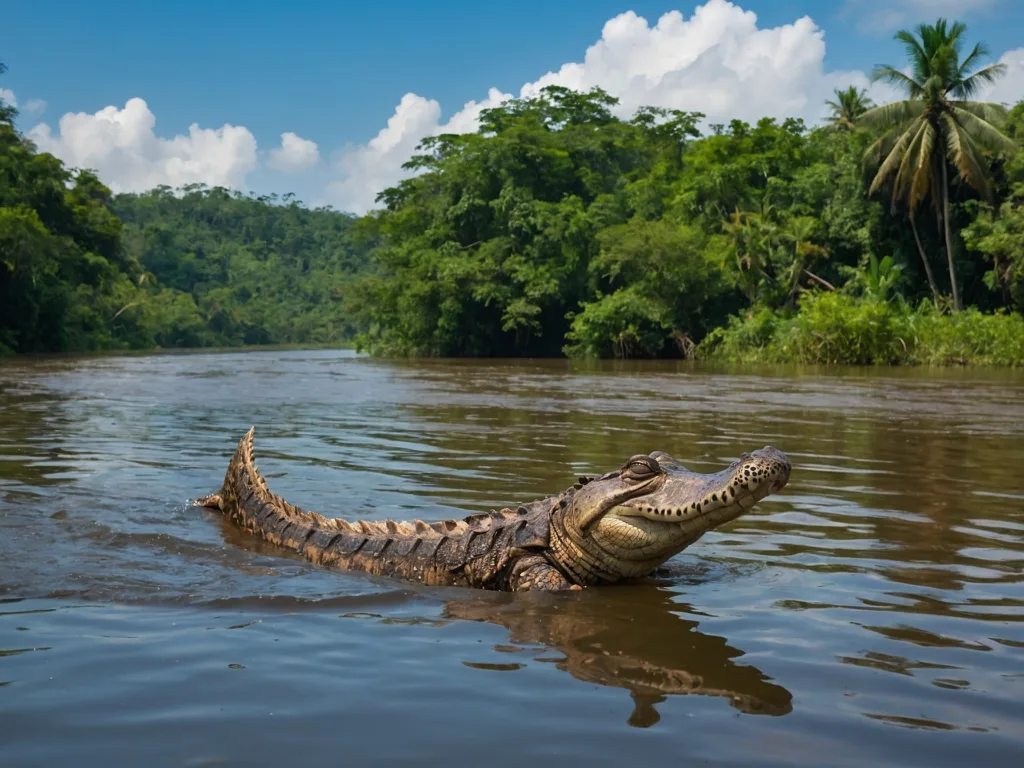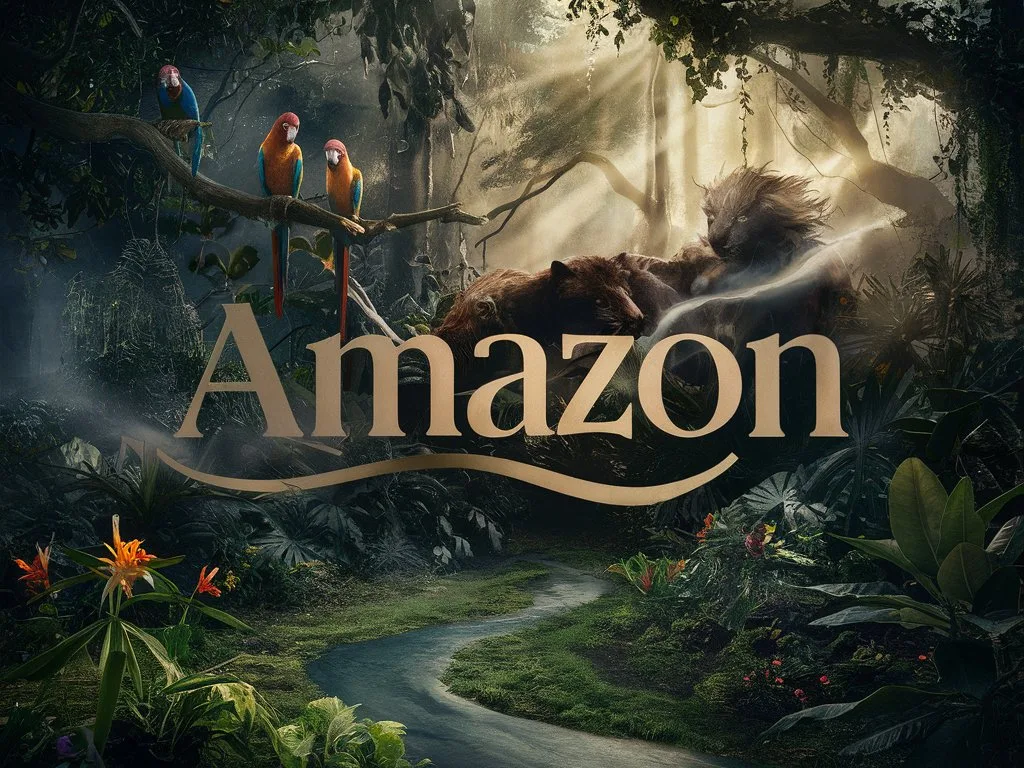Introduction: The Amazon Rainforest Unveiled

Overview of the Amazon Rainforest
The Amazon Rainforest, often described as the “lungs of the Earth,” spans a staggering 5.5 million square kilometers, encompassing parts of Brazil, Peru, Colombia, and Venezuela. This lush environment is not merely an expanse of trees and wildlife. It’s an essential part of the global ecosystem, contributing approximately 20% of the Earth’s oxygen while absorbing a significant amount of carbon dioxide. This elaborate forest serves a crucial role in the fight against climate change.
For the indigenous peoples who call this forest home, the Amazon is much more than just a natural wonder; it is a living record of their history, culture, and spirituality. The forest provides them with food, medicinal resources, and a deep sense of belonging, reinforcing their connection to this vibrant environment.
Purpose of the Article
In this blog post, we will uncover ten fascinating facts about the Amazon Rainforest, focusing on its diverse ecosystems and ecological importance. By sharing these remarkable insights, we aim to foster appreciation for this incredible region and its vital role on our planet.
Brief Discussion on Deforestation and Preservation
Sadly, the Amazon Rainforest faces severe threats from deforestation caused by logging, agriculture, and urban development. Global initiatives like the Amazon Fund and various NGOs strive to protect this vital ecosystem. Still, it is crucial for individuals to contribute to conservation efforts. Every small effort matters in the fight to preserve this magnificent area.
Biodiversity in the Amazon

Rich Variety of Species
The Amazon is a cornucopia of life, home to more than 390 billion individual trees and 16,000 species of plants. From towering Brazil nut trees to vibrant orchids, the landscape is a testament to nature’s creativity. Unique animals like the Amazon River dolphin, howler monkeys, and a myriad of insects thrive amidst this exceptional biodiversity.
Even the tiniest organisms play crucial roles in this ecosystem. For example, microorganisms such as bacteria and fungi help decompose organic matter, enrich the soil, and support plant growth.
Interconnected Ecosystems
The Amazon’s ecosystems function in a delicate balance, with every organism playing a role in the lively food chain. From the smallest ants to the largest predators, each species is interrelated. For instance, certain fungi are cultivated by leafcutter ants, while fig trees depend on specific pollinators.
Waterways like rivers and streams further connect these ecosystems, enriching the environment for many species through nutrient distribution.
Discoveries Yet to Be Made
Despite significant research, the vast unexplored regions of the Amazon still conceal countless secrets. Scientists estimate that around 50,000 undiscovered species, including potentially life-saving plants, await discovery. These findings could lead to breakthroughs in medicine and technology, promising advancements inspired by nature.
The Amazon River: A Lifeline

Length and Size
The Amazon River, measuring approximately 4,345 miles, holds the title of the second-longest river in the world, following the Nile. It carries more water than the next seven largest rivers combined. This impressive water flow shapes the floodplain ecosystems, facilitating nutrient recycling and supporting diverse life forms.
Cultural Significance
Historically, the Amazon River has served as a crucial conduit for indigenous peoples and settlers, enriching cultural exchanges and providing sustenance. It symbolizes local myths and legends that speak of river spirits and hidden treasures waiting for discovery.
Environmental Role
Beyond cultural richness, the Amazon River plays a vital role in maintaining ecological health. Its annual flood cycle rejuvenates ecosystems by replenishing vital nutrients, supporting various life forms. Additionally, the river contributes to carbon storage, helping regulate our global climate through the intricate interaction of water and ecosystems.
The Climate Secret of the Amazon

Rainfall Patterns
The Amazon receives an average annual rainfall of 2,300 millimeters, with noteworthy seasonal changes. The wet season creates a lush, green panorama, while the dry months reveal an unexpected beauty. This cyclic pattern not only nurtures abundant wildlife but also shapes local weather.
Global Climate Impact
The immense forests of the Amazon serve as a significant carbon sink, storing over 100 billion metric tons of carbon. They regulate weather patterns well beyond their borders, contributing to nearly one-third of the world’s total carbon storage. Protecting this ecological secret is essential for maintaining the Earth’s environmental balance.
Future Climate Predictions
As climate change advances, the future of the Amazon remains uncertain. Increased temperatures and shifts in rainfall patterns threaten biodiversity and the stability of ecosystems. Ongoing research is vital to comprehending these changes and finding solutions.
Indigenous Tribes and Their Wisdom

Cultural Diversity
Home to about 400 distinct indigenous tribes, the Amazon showcases a rich cultural diversity. Each community possesses unique languages, traditions, and beliefs, enriching our understanding of the rainforest. Their myths reveal the spiritual significance of the land, teaching the importance of living harmoniously with nature.
Traditional Ecological Knowledge
The close relationship that indigenous peoples share with the forest offers valuable insights. Many tribes practice sustainable hunting and agricultural techniques, prioritizing balance over exploitation. Their knowledge of medicinal plants highlights the interconnectedness of health and the environment.
Contemporary Challenges
However, these tribes face ongoing threats from encroaching industries and issues surrounding land rights. The expansion of agriculture and logging not only jeopardizes their homes but also disrupts the ecosystems they protect. Supporting cultural preservation and respecting tribal rights is crucial for maintaining the legacy of the Amazon and its indigenous knowledge.
Conclusion: The Amazon’s Role in Our Future

Summary of Key Points
The Amazon Rainforest is a treasure trove of astonishing facts that serve as a foundation for life on Earth. Its rich biodiversity, important ecosystems, and vibrant cultural heritage reflect the global significance of this remarkable region. Each part of the forest holds secrets that urge us to recognize the importance of its conservation.
FAQ
Q. What are some endangered species in the Amazon?
A: The Amazon rainforest is home to a vast array of wildlife, but several species are currently endangered due to habitat loss, poaching, and environmental changes. Some of the notable endangered species include:
Jaguar: As the largest cat in the Americas, jaguars are crucial for maintaining the health of the ecosystem. Sadly, their populations are declining due to deforestation and illegal hunting.
Amazon River Dolphin: Known for their playful behavior and intelligence, these dolphins face threats from habitat destruction and water pollution, leading to a decreasing population.
Green Macaw: With its vibrant feathers, the green macaw is a symbol of the Amazon. Overhunting and habitat loss have pushed these birds to the brink of extinction.
Giant River Otter: This social creature is threatened by habitat degradation and pollution in the rivers of the Amazon basin.
Protecting these endangered species is vital not only for biodiversity but also for the health of the entire ecosystem.
Q. How does deforestation affect global climate?
A: Deforestation in the Amazon rainforest has severe consequences that extend far beyond its borders. The Amazon rainforest acts as a critical carbon sink, absorbing carbon dioxide from the atmosphere. When trees are cut down, this stored carbon is released, contributing significantly to global climate change. Here are some key impacts of deforestation:
Increased Carbon Emissions: The loss of trees leads to increased levels of carbon dioxide in the atmosphere, exacerbating global warming.
Biodiversity Loss: Deforestation results in habitat destruction, leading to the extinction of numerous species, which in turn disrupts ecological balance.
Altered Weather Patterns: The Amazon rainforest plays a crucial role in regulating rainfall patterns. Deforestation can lead to changes in precipitation, affecting agriculture and water supply.
Soil Erosion: Without trees to anchor the soil, deforestation leads to increased soil erosion, impacting the fertility of the land.
Q. What can I do to help protect the Amazon rainforest?
A: Every individual has the power to contribute to the protection of the Amazon rainforest. Here are some effective ways to get involved:
Educate Yourself and Others: Understanding the importance of the Amazon rainforest can help raise awareness. Share information with friends and family.
Support Sustainable Products: Buy products that are certified as sustainable and eco-friendly. This practice reduces demand for goods that cause deforestation.
Reduce Your Carbon Footprint: Using energy-efficient appliances, reducing car travel, and supporting renewable energy initiatives can help mitigate climate change.
Donations to Conservation Organizations: Support organizations working to protect the Amazon through donations or volunteering.
Advocate for Policy Change: Engage with policymakers by advocating for environmental protection laws that safeguard the Amazon rainforest.
Q. What continent is the amazon rainforest in?
A: The Amazon rainforest spans across multiple countries in South America, including Brazil, Peru, Colombia, Venezuela, Ecuador, Bolivia, Guyana, Suriname, and French Guiana. It is the largest rainforest on the continent and serves an important role in the geography and climate of South America, influencing rainfall patterns and the hydrology of the entire region.
Q. Why is the Amazon rainforest famous?
A: The Amazon rainforest is renowned for its incredible biodiversity, featuring an estimated 390 billion individual trees, 16,000 species of trees, and countless animal species, including unique wildlife like sloths, toucans, and poison dart frogs. Apart from its rich wildlife, the Amazon is also famous for:
Cultural Heritage: It is home to many indigenous tribes with unique cultures and traditions.
Medicinal Resources: The rainforest contains numerous plants that are used for medicinal purposes, some of which may lead to the discovery of new medicines.
Environmental Impact: The Amazon’s role in carbon absorption and oxygen production makes it vital for Earth’s health.
Q. Who found the lost city in Amazon?
A: The search for lost cities in the Amazon has captivated explorers and archaeologists for centuries. Recently, technology like LiDAR has revealed complex ancient civilizations that once thrived in the rainforest. Researchers explored areas previously hidden under dense foliage, leading to the discovery of structures and systems that indicate advanced societies existed long before European colonization. Notably, the expeditions led by archaeologist Heinz C. Schmitz and his colleagues have uncovered remnants of settlements that suggest the Amazon was home to a rich tapestry of cultures and communities.
Call to Action
You can help protect this valuable ecosystem! Start by educating yourself about the Amazon’s significance, supporting sustainable practices, and participating in environmental initiatives. Every small action contributes to the preservation of the incredible Amazon Rainforest for future generations. Join us in ensuring that its hidden treasures continue to inspire wonder and respect!

Your article helped me a lot, is there any more related content? Thanks!
Thank you for your sharing. I am worried that I lack creative ideas. It is your article that makes me full of hope. Thank you. But, I have a question, can you help me?
Your point of view caught my eye and was very interesting. Thanks. I have a question for you.